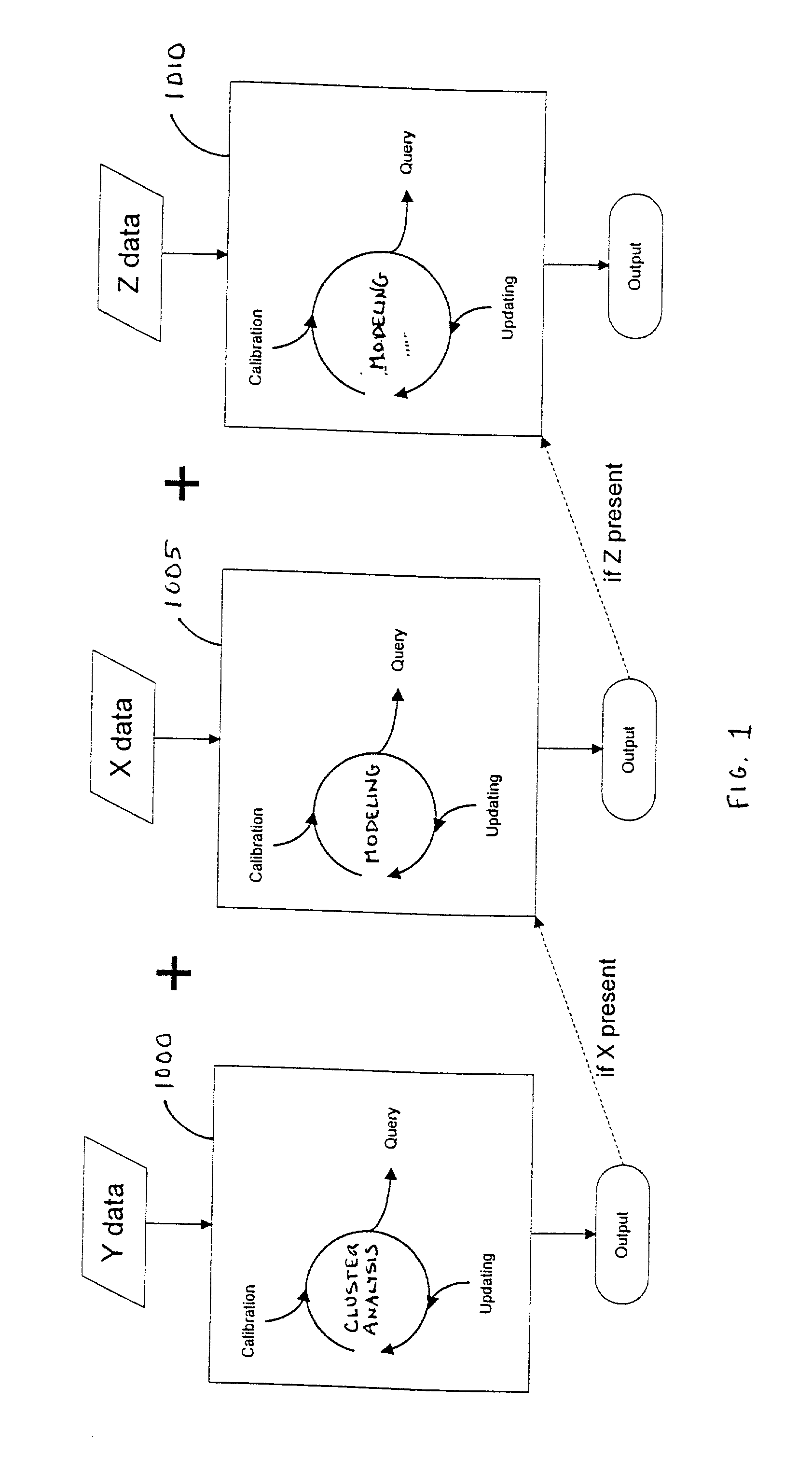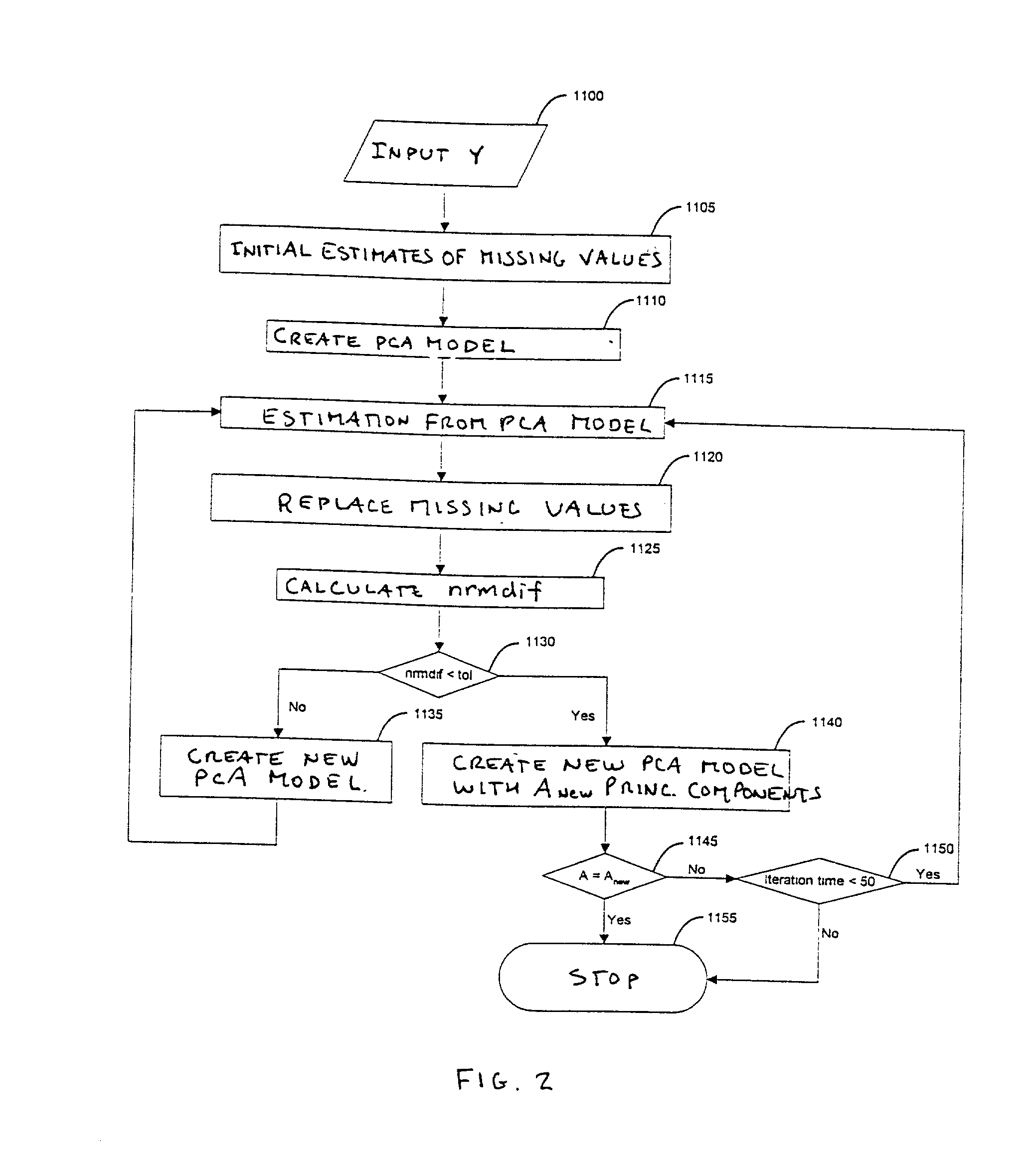Method and system for the dynamic analysis of data
a dynamic analysis and data technology, applied in relational databases, instruments, marketing, etc., can solve the problems of analyzing the accumulated data, the value of the accumulated data is minimal, and the analysis of the accumulated data is often faced with new problems and challenges
- Summary
- Abstract
- Description
- Claims
- Application Information
AI Technical Summary
Benefits of technology
Problems solved by technology
Method used
Image
Examples
Embodiment Construction
[0090] Before proceeding with a detailed review of the mathematical computation underlying the method and system of the present invention, perhaps the present invention is best explained by an example.
[0091] First, suppose that ten different carbonated beverages were each tasted by one hundred consumers of carbonated beverages. Each consumer rated each beverage on a nine-point hedonic scale, thus generating a 100.times.10 data array, Y.
[0092] Secondly, each consumer answered twenty demographic and lifestyle questions, thus generating a 100.times.20 data array, X.
[0093] Thirdly, a panel of beverage experts rated each of the ten carbonated beverages based on fifteen different categories or criteria (e.g., as sweetness, degree of carbonation, smell, and color) using a seven-point scale, thus generating a 10.times.15 data array, Z.
[0094] Each of the data matrices (X, Y and Z) is preferably contained in an ASCII or similar computer-readable file which can then be input or entered into a ...
PUM
 Login to View More
Login to View More Abstract
Description
Claims
Application Information
 Login to View More
Login to View More - R&D
- Intellectual Property
- Life Sciences
- Materials
- Tech Scout
- Unparalleled Data Quality
- Higher Quality Content
- 60% Fewer Hallucinations
Browse by: Latest US Patents, China's latest patents, Technical Efficacy Thesaurus, Application Domain, Technology Topic, Popular Technical Reports.
© 2025 PatSnap. All rights reserved.Legal|Privacy policy|Modern Slavery Act Transparency Statement|Sitemap|About US| Contact US: help@patsnap.com



